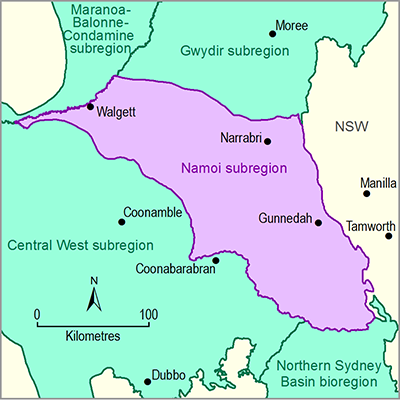The AWRA-L calibration tends to under estimate zero-flow days, low-flow days, low-flow spells and length of the longest low-flow spell. The AWRA-R is also calibrated poorly for zero-flow days and low-flow days. This is true for all subregions including the Namoi subregion which, for most parts, is a comparatively drier basin compared to the Hunter subregion. There are a number of reasons for this:
- The lower end of the rating curve tends to be highly variable due to physical changes taking place in the stream channel bed, making the lower low-flow measurement relatively more prone to error.
- Modelled results usually comprise long tails of very low flows asymptotic to zero requiring guessing a threshold value below which all modelled values are taken as zero.
- Although transformed flow was used with a combination of Nash–Sutcliffe efficiency and bias as objective function to improve the goodness of fit of the lower flow values, the tendency of the Nash–Sutcliffe efficiency to match higher flow, combined with the uncertainty in the extent of appropriate transformation, leads to the errors in low-streamflow calibration.
The difference in modelled and observed values are caused by errors (i) in input streamflow data, (ii) in input climate data, (iii) in model structure, and (iv) due to use of non-optimal parameter values. The model calibration minimises only the fourth error (iv) (Madsen, 2000).
Inherent problems with poor low-streamflow calibration will always exist unless all of the reasons described above are eliminated. However, effects of the poor low-streamflow calibration become less crucial in the bioregional assessment (BA) as the difference between CRDP and baseline would cancel out some of the errors caused. Besides, the results reported in the BA are based on the best 300 replicates obtained by comparing observed and modelled low-streamflow related hydrological response variables.

